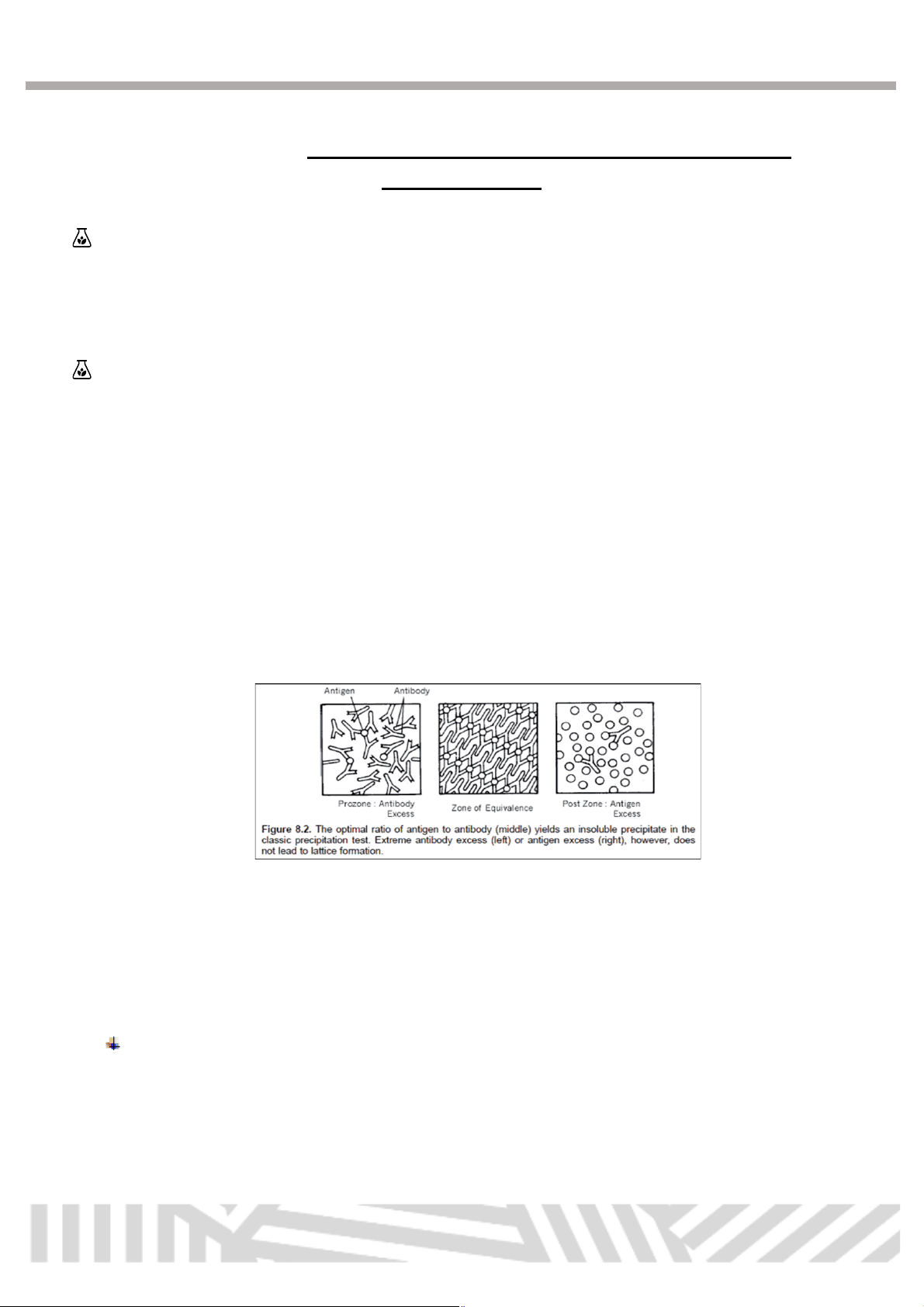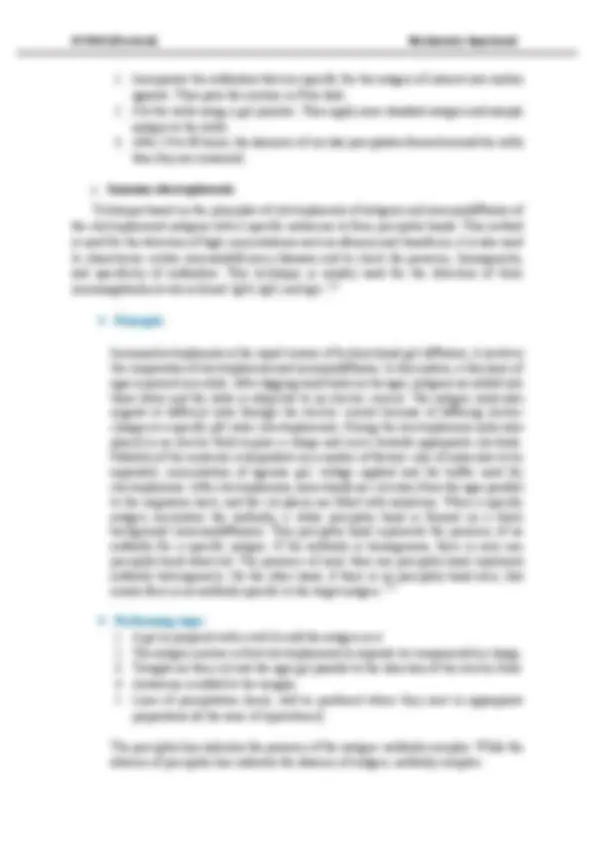




Study with the several resources on Docsity

Earn points by helping other students or get them with a premium plan


Prepare for your exams
Study with the several resources on Docsity

Earn points to download
Earn points by helping other students or get them with a premium plan
Community
Ask the community for help and clear up your study doubts
Discover the best universities in your country according to Docsity users
Free resources
Download our free guides on studying techniques, anxiety management strategies, and thesis advice from Docsity tutors
Simple immunodiffusion (ID) technique is any technique that involving diffusion of antigen or antibody through a semi-solid medium, usually agar or agarose gel ...
Typology: Study notes
1 / 4

This page cannot be seen from the preview
Don't miss anything!



!!
!
!
concentration of a specific antigen.
Antibody and antigen reactions is widely used in laboratory diagnostics including: precipitation reactions, agglutination reactions, immunofluorescence, radioimmunoassay (RIA), ELISA and Western blotting. Precipitation reactions are based on the interaction of antibodies and antigens. They are based on two soluble reactants (Ab and Ag) that come together to make one insoluble product, the precipitate. These reactions depend on the formation of lattices (cross-links) when antigen and antibody exist in optimal proportions (it is known as zone of equivalence and appears to as precipitation). Excess of either component reduces lattice formation and subsequent precipitation. (1) In precipitation reactions the formation of an Ab-Ag lattice depends on the valency of both the antibody and antigen. The antibody must be bivalent; a precipitate will not form with monovalent Fab fragments. In other hand, the antigen must be either bivalent or polyvalent; that is, it must have at least two copies of the same epitope or have different epitopes that react with different antibodies present in polyclonal antisera. (^2 ) PAUSE AND THINK !!What is the differences between monoclonal and polyclonal antibodies? Precipitation reactions differ from agglutination reactions in the size and solubility of the antigen and sensitivity. For precipitation, antigens are soluble molecules, and for agglutination, antigens are large, easily sedimented particles. In addition, agglutination is more sensitive than
! precipitation reaction because it takes a lot of more soluble antigens and antibody molecules to form a visible precipitation. (1, 3 ) There are several precipitation methods applied in the laboratory, these include simple immunodiffusion and electro-immunodiffusion. Simple immunodiffusion (ID) technique is any technique that involving diffusion of antigen or antibody through a semi-solid medium, usually agar or agarose gel, resulting in a precipitin reaction. Single radial immunodiffusion (RID) - Mancini test- and double immunodiffusion – Ouchterlony test- are types of ID techniques. Electro-immunodiffusion method reaction differs in the uses of an electric current to enhance the mobility of the reactants toward each other. This method includes: immuno- electrophoresis (IEP), immunofixation, rocket electro-immunodiffusion (EID) and counter immune-electrophoresis (CIEP). (1) Single radial immunodiffusion (RID) - Mancini-:! RID is a quantitative immunodiffusion technique used in immunology to determine the quantity (concentration) of an antigen. This method is derived primarily from the work of Fahey and McKelvey and Mancini et al. This method results in precipitin ring formation on a thin agarose layer. The diameter of the ring correlates with the concentration of proteins in the precipitin. It is suitable for routine use in the diagnostic laboratories. (1, 4 ) " Principle: Single radial immunodiffusion is based on the diffusion of an antigen in a radial pattern from a cylindrical well through an agar or agarose gel containing an appropriate mono- specific antibody. As the antigen diffuses radially in all directions into the medium (which containing the fixed antibody), its concentration continuously decreases until the equivalence point (zone of equivalence.) is reached. At this point an insoluble immune precipitation complexes occurs as the antigen and antibody reach equilibrium. The result is the formation of a precipitin ring around the antigen well that marks the boundary between the antibody and the antigen. The diameter of the ring increases with time as the antigen diffuses into the medium, reacts with the antibody, and forms insoluble precipitin complexes. At this stage, a linear relationship exists between the square of the ring diameter and the antigen concentration. Since the diameter of the ring is directly proportional to the antigen concentration, a calibration curve of diameter versus antigen concentration can be constructed using a series of reference standards of known antigen concentration. The concentration of the antigen in an unknown sample may then be determined by the measurement of the ring diameter produced by that unknown sample and reading the corresponding concentration values from the calibration curve. (1, 4 ) " Performing steps:
!